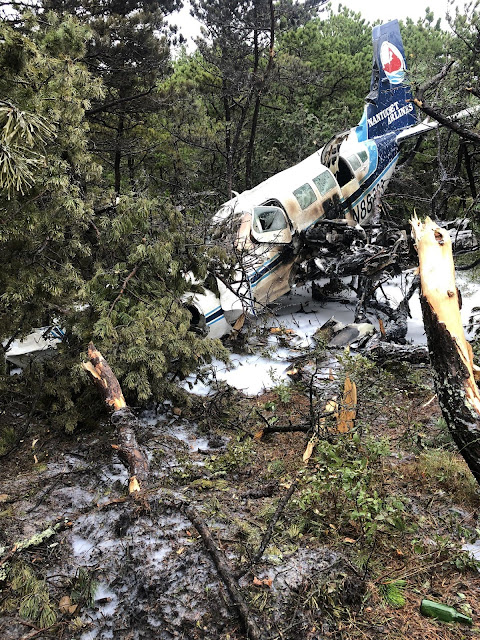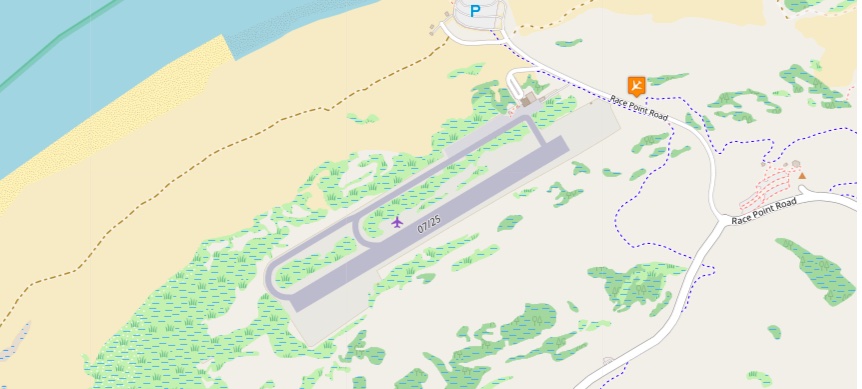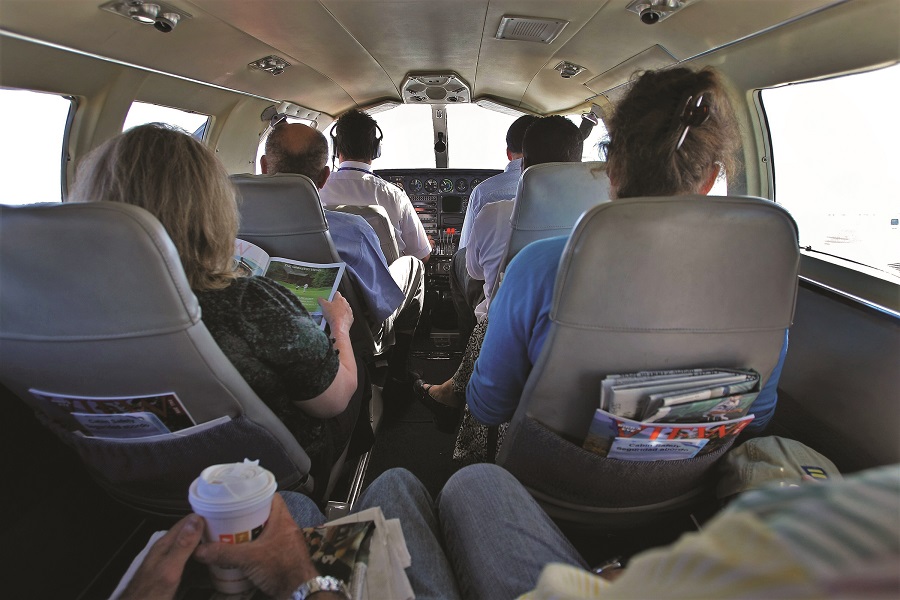PROVINCETOWN — “It’s been a tough four days,” said Cape Air founder and CEO Dan Wolf on Monday afternoon. “This is incredibly hard.”
He had just conducted a Zoom meeting for all of his employees to talk about the accident that had happened on Thursday, Sept. 9, when Cape Air Flight 2072 from Boston attempted to land in Provincetown in a rainstorm and ended up in the woods off Race Point Road in flames.

No one was killed. The plane, one of Cape Air’s vintage Cessna 402Cs, was carrying six passengers along with the pilot, Pieter Dijkstra, 51, of Appleton, Maine. All seven escaped from the burning plane and were taken to Cape Cod Hospital. Dijkstra, along with three or four of the passengers, according to unconfirmed reports, were moved to the burn unit at Mass. General Hospital in Boston. Only one of the passengers has been identified: Autumn Kerr of Sylvania, Ohio, who was interviewed on television outside Cape Cod Hospital on the night of the accident. She said her traveling companion, whom she did not name, was still inside. Kerr suffered second-degree burns, the Cape Cod Times reported. The conditions of the pilot and the other passengers are not known.
The plane had taken off at 7:11 a.m. on Sept. 9 from Knox County Regional Airport in Owls Head, Maine and landed at Logan Airport in Boston at 8:12 a.m., according to online flight data. It left Logan for the 25-to-30-minute trip to Provincetown at 3:04 p.m. The plane was scheduled to return to Boston and then to Knox County Regional Airport that night. The pilot’s name was reported by the Courier-Gazette in Knox County where he lives, not by Cape Air or any of the officials on Cape Cod.
Wolf would not speculate on the cause of the accident, citing an ongoing investigation by the National Transportation Safety Board, the Federal Aviation Administration, and the Mass. Dept. of Transportation Aeronautics Division. But he outlined what was known about the circumstances.

“It was about 3:30 p.m.,” said Wolf. “The pilot made the normal approach to Runway 7. He tried to abort the landing and impacted the trees at the far end of the runway. We don’t know why. It was not great weather that day — there was moderate to heavy rain. But we can’t say that weather was a contributing factor.”
Wolf’s description of the aborted landing attempt appeared to corroborate what passenger Kerr told WCVB-TV in the interview: “We were obviously not going to land and picked back up,” she said. “All of a sudden, we just hit the ground in the trees and burst into flames in the front, and then the right side burst into flames.”

Robert Katz, a corporate pilot and flight instructor in Dallas, Texas with a keen interest in airline safety, believes that the weather conditions at the time of the accident probably were a factor, along with possible poor judgment on the part of the pilot. Studying records of the weather conditions at Provincetown Municipal Airport on the afternoon of Sept. 9, Katz said he believed that the pilot was attempting to land with a tailwind, rather than into the wind, which would have been the normal procedure.
The ceiling at the time of the flight — that is, the height of the lowest clouds — was only 200 feet, said Katz. So the pilot would have been flying entirely by instruments until he was very close to the airport.
Katz also cited the length of the Provincetown runway as a factor.
“Of all the airports Cape Air flies to, Provincetown is probably the most challenging because of the length of the runway,” he said. “It’s only 3,500 feet long — the shortest in the region.”
Katz said he thinks the pilot may have realized too late that, because of the tailwind and the runway length, he had too little runway left as he was about to touch down and decided to abort the landing and pull up.

Another factor could have been the moderate to heavy rain at the time. The Cessna 402C does not have the ability to reverse its propeller thrust to aid in slowing the plane on landing. So it must rely entirely on the brakes. In very wet conditions, braking becomes much more difficult, said Katz.
Wolf said he did not think the length of the Provincetown runway was a problem. “From a safety standpoint,” he said, “the current runway is more than adequate. It’s not a short runway for the equipment we use.”
He suggested that lengthening the runway could have undesirable effects on the Outer Cape community. “The main reason you would want a longer runway is to serve bigger aircraft,” he said. “One of the conversations we’ve had over the years in Provincetown is why we don’t have more direct service to New York. Well, be careful what you ask for. There are all kinds of community issues around that.”
The plane involved in last week’s accident was built in 1980. Cape Air is in the process of replacing its aging fleet of Cessnas with the Tecnam P2012 Traveller. The airline has purchased 25 of the new planes thus far and has options to buy 85 more. Wolf is also hoping to acquire all-electric planes when they become available.
“The reason we’re doing a fleet replacement is economic, not for safety,” he said. “The Tecnam will be much more efficient to operate.”

The WCVB-TV interview with Kerr suggested that pilot Dijkstra had acted heroically in helping her out of the burning plane. She said she was trapped in her seat, unable to undo her safety belt. “I ripped the seat out and turned it around to use it like a shield from the flames,” she said. The pilot, who had escaped from the plane, returned to help her, she said: “I think that, because we were the last, he came back and unbuckled it. He looked pretty injured because I saw him on the gurney when I went to my ambulance.”
It will likely be one and a half to two years before the FAA and NTSB issue a final report on the cause of the accident. An unofficial preliminary report may be available in a few weeks.
Editor’s note: An earlier version of this article stated that the final accident report would take at least three months. The actual amount of time for the FAA and NTSB to issue a final report is usually at least 18 months.



